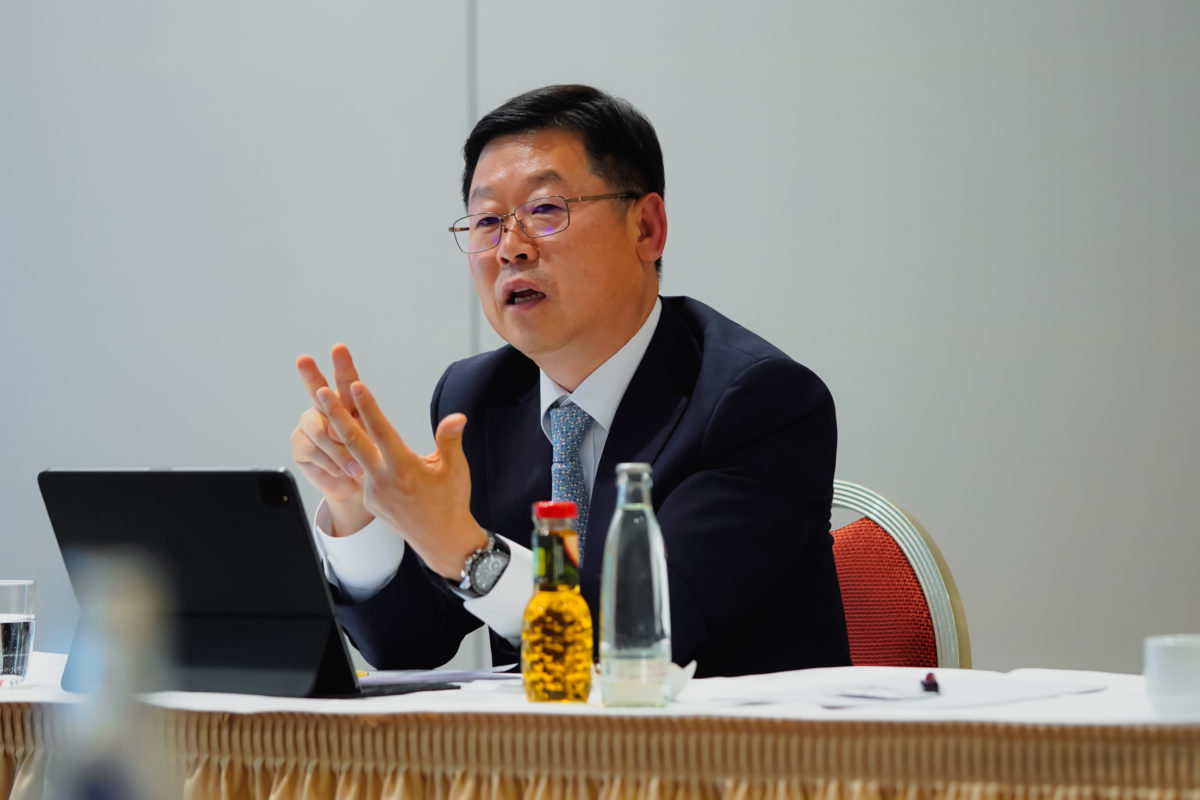Hanwha Q Cells has revealed plans to expand its solar module production capacity in the United States and its PV cell capacity in its home market, South Korea.
“Our company has currently a capacity of 12 GW for both cells and modules spread across Korea, Malaysia, China and the US,” CEO Justin Lee told pv magazine at a press briefing for the Smarter E event in Munich, Germany.
It wants to invest $320 million in the expansion plan, of which $170 million will be devoted to the construction of a 1.4 GW factory at an unspecified location in the United States. Another $150 million will be used to expand cell capacity in South Korea, where the new investment will increase domestic cell capacity to 5.4 GW.
The new US factory is expected to begin production in the first half of next year. This will raise its total US panel capacity, which also includes a 1.7 GW manufacturing facility in Georgia, to more than 3 GW.
“We see strong demand for Made in America modules, especially among the residential sector,” said Lee.
He noted the importance of the polysilicon supply chain that the company is setting up in the US market, where Hanwha Solutions recently acquired a stake in REC Silicon, with the aim of supporting the company in restarting its factory in Moses Lake, Washington, in 2023.
“Currently, we are still sourcing around 95% our ingots and wafers from China, but this will change soon, as we have also recently signed a $1.2 billion deal with Korean manufacturer OCI, which is increasing its manufacturing capacity in Malaysia,” Lee said. “We are not planning, however, to restart our own polysilicon production in Korea,” he also stated.
The company also plans to improve the carbon footprint of its products, as a big portion of the power supply used for new production, or polysilicon supply, should come from hydropower or other emissions-free energy sources.
“Growing uncertainties tell us that securing reliable, sustainable energy has become more important than ever before,” Lee said. “To do this, Q Cells will increase renewable supply from diversified sources and find cleaner ways to produce energy. That way, we will contribute to both energy security and net-zero emissions.”
Lee said the company is open to building more factories in other parts of the world.
“But carbon footprint rules would not be enough and other incentives such tax credits may be necessary,” he said in response to a question about whether the company would be open to producing PV modules in Europe.
The regional diversification of the company’s production activities is also a response to the crisis triggered by the pandemic and the war in Ukraine.
“High polysilicon prices and logistics costs are becoming unsustainable,” he said, noting that shipping costs currently account for between €0.04/W and €0.06/W per module. “We expect lower polysilicon prices before the end of the year or in early 2023, but we will never go back to 2019 levels.”
This content is protected by copyright and may not be reused. If you want to cooperate with us and would like to reuse some of our content, please contact: editors@pv-magazine.com.




1 comment
By submitting this form you agree to pv magazine using your data for the purposes of publishing your comment.
Your personal data will only be disclosed or otherwise transmitted to third parties for the purposes of spam filtering or if this is necessary for technical maintenance of the website. Any other transfer to third parties will not take place unless this is justified on the basis of applicable data protection regulations or if pv magazine is legally obliged to do so.
You may revoke this consent at any time with effect for the future, in which case your personal data will be deleted immediately. Otherwise, your data will be deleted if pv magazine has processed your request or the purpose of data storage is fulfilled.
Further information on data privacy can be found in our Data Protection Policy.